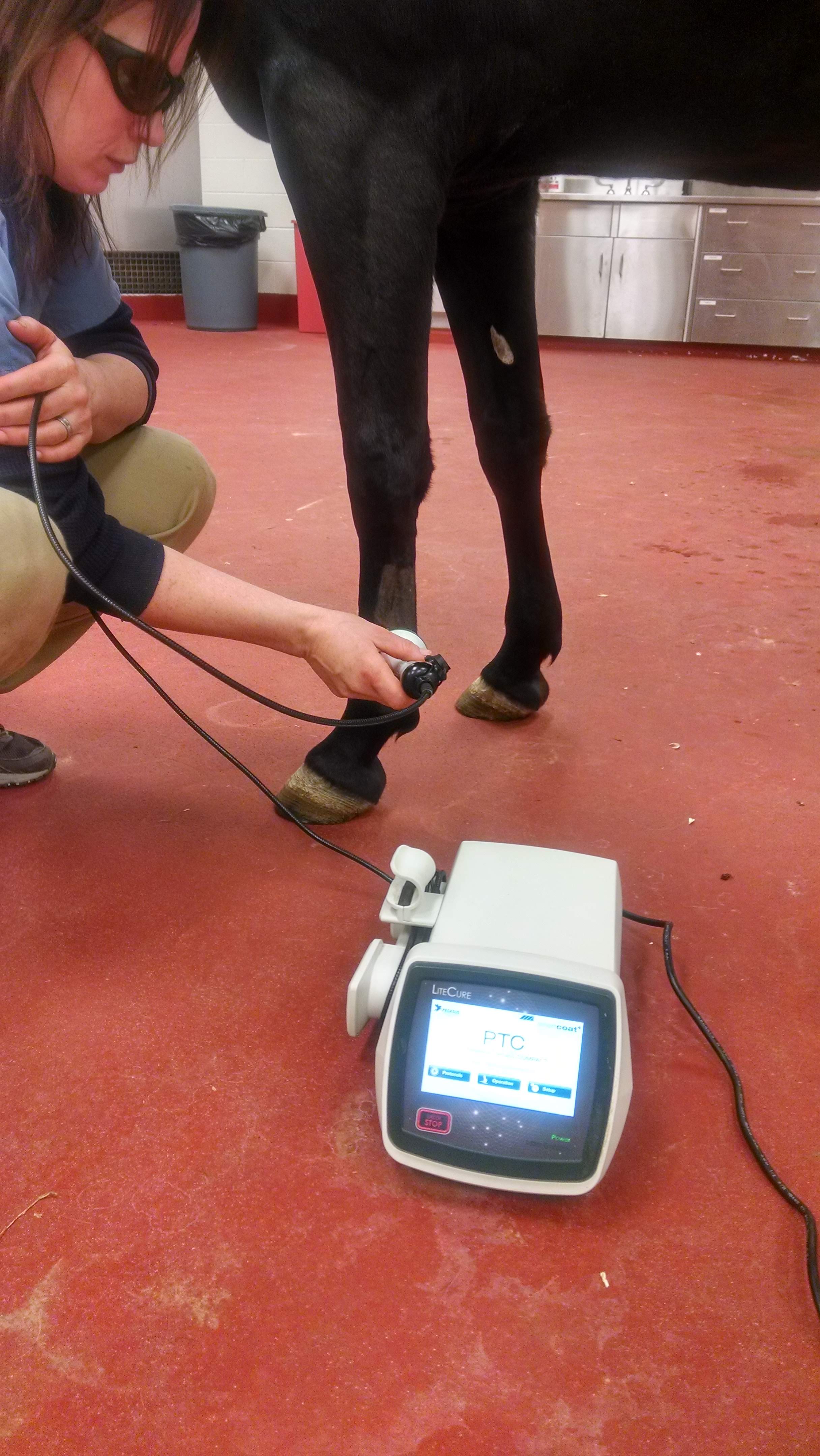Equine Therapy: Exactly How It Assists Build Self-confidence and Psychological Stamina
Equine Therapy: Exactly How It Assists Build Self-confidence and Psychological Stamina
Blog Article
Evaluating the Effectiveness of Laser Therapy in Horse Therapy for Injury Recovery
The evaluation of laser therapy's efficiency in equine injury recovery hinges on several variables, including recuperation time, discomfort mitigation, and tissue regeneration. Veterinarians regularly observe premium outcomes with laser treatment compared to conventional approaches, placing it as a crucial aspect in equine care. Equine Therapy.

Comprehending Laser Therapy
Laser treatment has actually ended up being an essential device in veterinary medicine, especially in the treatment of equine conditions. Understood for its non-invasive nature and efficiency, laser treatment involves the application of certain wavelengths of light to boost cells repair work and decrease inflammation. This restorative modality is significantly preferred for its ability to accelerate the healing procedure in steeds suffering from a range of musculoskeletal injuries and persistent conditions.
The main system behind laser treatment is its ability to enhance cellular functions. When laser light penetrates the skin, it is absorbed by mitochondria, the powerhouse of cells, which results in increased manufacturing of adenosine triphosphate (ATP) This biochemical energy increase helps with mobile repair and regeneration. Additionally, laser treatment promotes vasodilation, boosting blood flow and oxygen distribution to damaged cells, thus expediting healing.
In equine medication, laser therapy is particularly valuable for problems such as tendonitis, osteo arthritis, and injury healing. The method is lauded for its pain-relieving residential properties, enabling equines to regain wheelchair and function much more rapidly. Vets likewise appreciate its marginal side impacts contrasted to various other therapy methods, making it a dependable and safe alternative for equine treatment.
Exactly How Laser Therapy Works
To understand how laser treatment functions, it is necessary to look into the interaction in between light energy and organic tissues. Laser treatment, likewise known as Low-Level Laser Therapy (LLLT) or photobiomodulation, employs details wavelengths of light to penetrate tissues and stimulate cellular procedures. The mechanism rests on the absorption of photons by cell chromophores, largely within the mitochondria, which are vital for energy manufacturing.
Upon absorption, these photons trigger a collection of biochemical changes, boosting mitochondrial function and resulting in enhanced adenosine triphosphate (ATP) production. This rise in ATP increases cellular metabolic rate, promoting cells repair work and regrowth. In addition, laser treatment modulates inflammatory feedbacks by impacting cytokine degrees and lowering oxidative stress, thus alleviating discomfort and swelling.
Another significant facet of laser treatment is its role in boosting microcirculation. The therapy advertises vasodilation, enhancing blood flow and oxygen shipment to damaged tissues. This facilitates the elimination of cellular particles and supports the spreading of fibroblasts and collagen synthesis, crucial for injury healing.
Clinical Proof
The efficacy of laser therapy in equine treatment has been substantiated via different scientific research studies, showcasing its therapeutic potential throughout a range of problems. A research carried out by Turner et al. (2012) demonstrated that steeds treated with low-level laser treatment (LLLT) for tendon injuries showed sped up recovery Look At This contrasted to those obtaining traditional therapies.
Similarly, research study by Johnson and coworkers (2015) concentrated on equine muscle injuries, exposing that laser treatment dramatically expedited muscle mass fiber regrowth and lowered muscular tissue tightness. Scientific analyses have revealed that laser therapy can alleviate chronic conditions such as osteoarthritis.
Vet Insights
Veterinary professionals have progressively recognized the worth of laser treatment in equine treatment, pointing out both empirical proof and firsthand experience. Dr. Jane Smith, a leading equine vet, notes that laser therapy has revealed exceptional efficacy in minimizing inflammation and speeding up tissue repair service.
Veterinarians also appreciate the flexibility of laser therapy. She points out that laser treatment can be customized to the details demands of each horse, making sure ideal results.

Practical Factors To Consider
A crucial aspect of implementing laser treatment in equine therapy involves understanding the sensible factors to consider that ensure its efficiency and security. First and primary, it is important to select the suitable laser device, as various types differ in wavelength, power, and penetration depth. Veterinarians must be skilled in these specifications to customize therapy methods effectively to each injury type
In addition, the regularity and period of laser therapy sessions need careful planning to maximize therapeutic advantages while decreasing any type of prospective unfavorable results. Regular tracking of the equine's reaction to therapy can guide essential adjustments in the therapy regimen. Developing a risk-free and controlled environment during therapies is additionally vital to avoid accidental direct exposure to laser emissions, which could harm both the steed and the handler.
Educating and accreditation of employees read review providing laser treatment are vital to ensure appropriate method and to copyright security standards. Furthermore, keeping precise documents of each session, including laser settings and observed results, is essential for assessing the general performance of the therapy and for making data-driven choices.
Verdict
Laser therapy has arised as a reliable technique in equine injury rehabilitation, offering significant advantages in recovery time, discomfort alleviation, and tissue recovery. For optimum outcomes, constant tracking and customized therapy protocols stay important in leveraging the full potential of laser therapy in equine treatment.
Report this page